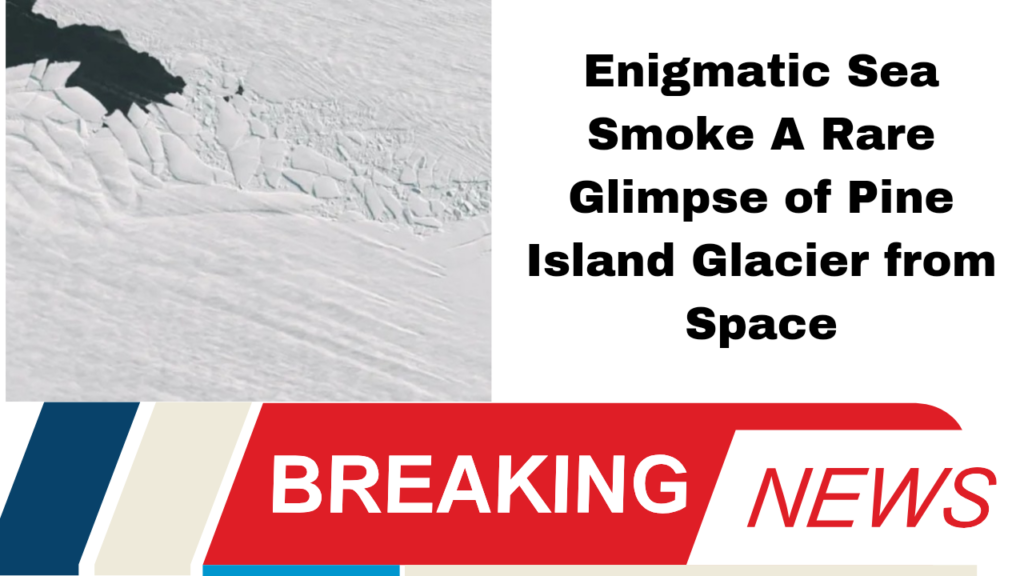In an extraordinary event, NASA’s satellite captured a breathtaking view of Pine Island Glacier in western Antarctica, where a phenomenon resembling “smoke” has emerged over the ocean’s surface. This captivating sight, often referred to as “sea smoke,” is actually fog formed by the interaction of warm water and cold air.
The recent occurrence of sea smoke was triggered by a combination of strong winds and warmer water conditions. These winds pushed aside ice and allowed warmer water to rise to the surface. This warmer water released moist air into the frigid, dry atmosphere, resulting in the condensation of moisture and the formation of fog. From a ground perspective, it resembles a ghostly fog machine enveloping the water, creating an eerie, cottony haze.
While sea smoke is not uncommon often seen in regions like the Great Lakes during winter its appearance over Pine Island Glacier is noteworthy. This area is typically obscured by clouds, making the satellite view a rare and striking observation.
Pine Island Glacier plays a crucial role in Antarctica’s ice dynamics. It functions as a conduit for the massive ice sheet, channeling ice into the surrounding ocean. Since the 1990s, the glacier has been losing ice at an alarming rate due to climate change, resulting in a dramatic increase in ice flower
Pine Island Glacier, along with its neighbor, the infamous “Doomsday Glacier” Thwaites, faces significant threats from rising temperatures and diminishing snowfall. Both glaciers are losing ice rapidly, with the potential to raise sea levels by several feet on their own. Moreover, they act as a crucial barrier, helping to stabilize the larger Antarctic ice sheet, which contains enough ice to increase sea levels by up to 10 feet if it were to collapse.
The sight of sea smoke over Pine Island Glacier serves as a stark reminder of the urgent challenges posed by climate change. As these vital glaciers continue to lose ice at unprecedented rates, understanding and mitigating their impact is crucial for protecting our planet’s future.











More Stories
Understanding America’s Regional Patchwork A Guide to the Key Political Areas
The Electoral College Debate A Closer Look at Its Impact on Modern Elections
November’s Unsettling Tropical Outlook Potential Storms Loom in the Atlantic